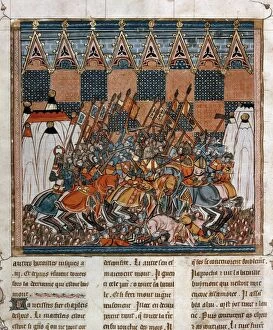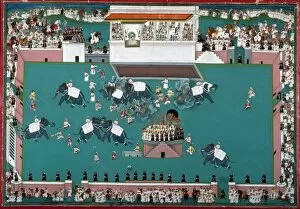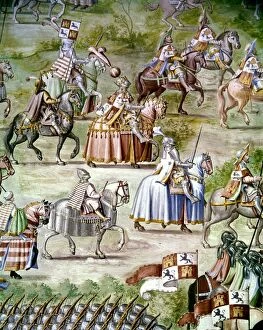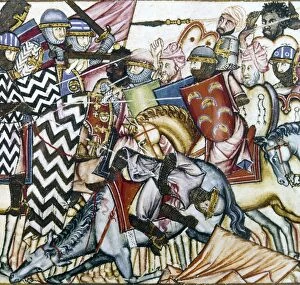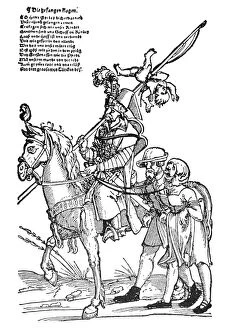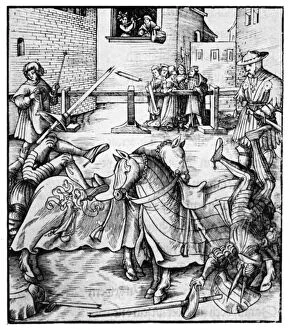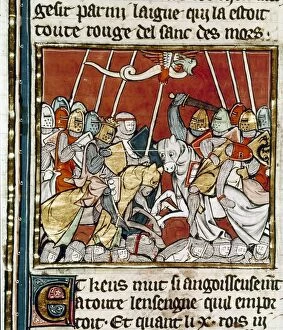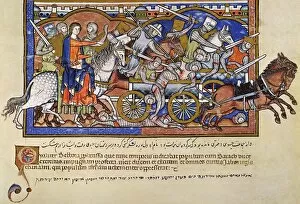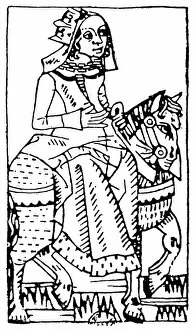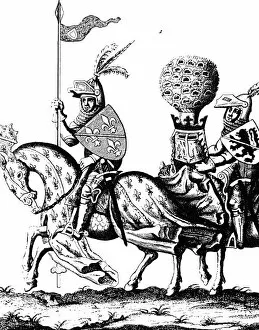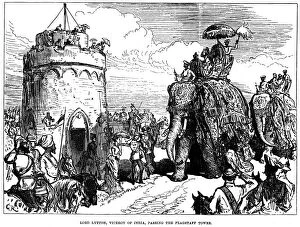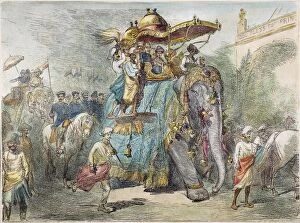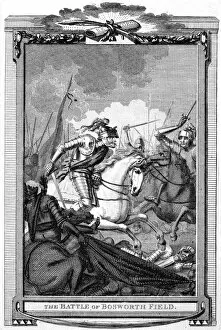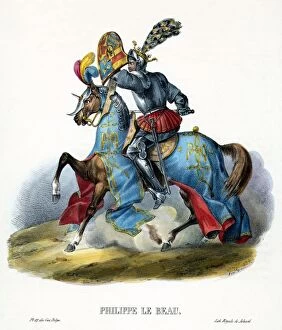Caparison Collection (#5)
In the enchanting world of Canterbury Tales, a woodcut of the Knight captures our imagination and transports us to c1490
For sale as Licensed Images
Choose your image, Select your licence and Download the media
In the enchanting world of Canterbury Tales, a woodcut of the Knight captures our imagination and transports us to c1490. With his caparisoned steed, adorned in regal trappings, he epitomizes chivalry and honor. Traveling back further in time to 1099, we witness European knights capturing Jerusalem during the First Crusade. In a fanciful manuscript, their victorious moment is depicted with intricate detail and vibrant colors. The caparisons on their horses reflect their triumph and valor. The Middle Ages were an era where knighthood reigned supreme. A line engraving from the 19th century showcases a knight meticulously arrayed for a tournament. Every inch of his armor shines as bright as his spirit while his caparison adds an extra touch of grandeur to his noble presence. Venturing into the East Indies, we encounter a captivating scene near Delhi featuring a majestic caparisoned elephant. Its embroidered housings and trappings are fit for royalty, reminiscent of Queen Victoria's exhibition at Crystal Palace in 1851. This magnificent creature embodies power and grace. Returning to Chaucer's Prologue to Canterbury Tales, another woodcut introduces us to "The Knight. " His attire exudes elegance with its carefully crafted caparison that complements his stature as one of literature's most revered characters. Delving deeper into history reveals Jean de Daillon's coat of arms proudly displayed by a knight in c1480. Guillaume Desremaulx masterfully captures this symbol of nobility through artistry that transcends time. Aimery de Guillaume Berard emerges from the annals of French history as an esteemed knight from the 13th century. His gallant figure dons armor embellished with exquisite details including an awe-inspiring caparison that reflects both strength and sophistication. From France to Germany, cavalry knights armored themselves throughout centuries.

